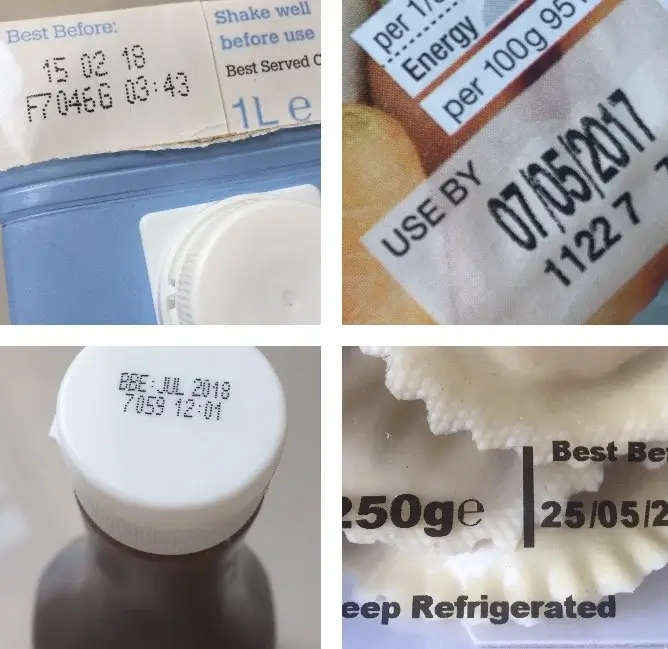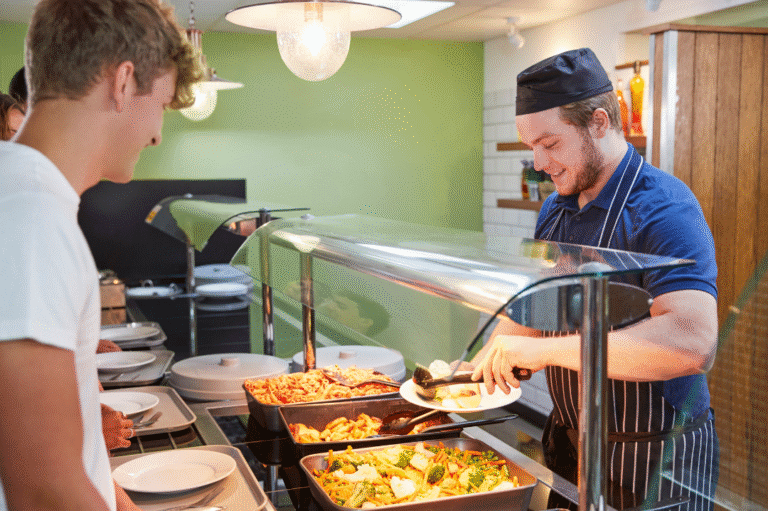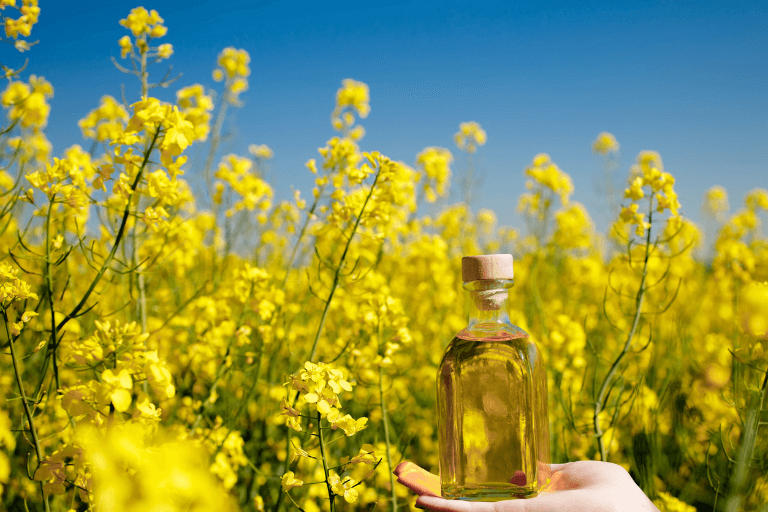At household level, it’s estimated that up to a third of food waste is linked to date labelling on food products. A European survey conducted in 2015 of 26,601 participants found that half (49%) of European consumers think that better and clearer information on the meaning of ‘Best before’ and ‘Use by’ dates would help them waste less food at home (European Commission, 2015).
There is a legal requirement that most foods require either a ‘Use by’ date (where there’s a food safety risk if the food is consumed after the date), or a ‘Best before’ date (to indicate the point after which the food may not be at its best quality).
Foods such as fresh fruit and vegetables which haven’t been peeled or cut, vinegar, cooking salt, confectionery made almost solely of flavoured or coloured sugars, and chewing gums do not need to display a ‘Best before’ or ‘Use by’ date, although they do require to display a lot number (DEFRA, 2016).
The Food and Drink Federation recently published a ‘Date Marking Information Sheet’ which provides a useful summary of the two types of date marks – ‘Use by’ and ‘Best before’ (FDF, 2022).
‘Use by’ date
The ‘Use by’ date is all about safety. Foods can be eaten up until the use by date. You generally see these on foods that go off quickly, such as fish, meat and ready prepared salads. You can also freeze some foods up until the use by date. If it’s after the use by date, don’t eat it, cook it or freeze it. So if the food has a ‘Use by’ date of today, then you must use the food by the end of today. The food could be unsafe to eat or drink, even if it looks and smells ok.
‘Best before’ date
The ‘Best before’ date is all about quality. The food will simply taste at its best, before the best before date. However, the food will still be safe to eat after the best before date, but the flavour and texture may not be as good.
Storage instructions
For the ‘Use by’ and ‘Best before’ dates to be valid, you need to follow the storage instructions correctly. If the product advises to ‘keep refrigerated’ and the food has been left on a table in a warm room all afternoon then the food will spoil more quickly and you may risk food poisoning.
The Food Standards Agency recommend that ‘keep refrigerated below 5°C’ guidance should be used where refrigerator temperature information is stated on pack. A survey conducted by WRAP of 48 domestic refrigerators found that 70% were operating at temperatures above 5°C (WRAP, 2023). Maintaining refrigerator temperatures at the correct level could prevent £200 million worth of food being wasted as well as help prevent incidences of food borne illness (WRAP, 2023).
‘Freeze on day of purchase’
Guidance regarding ‘freeze on day of purchase’ is commonly seen on products such as bread, bacon, chicken and cooking sauces. Currently, £5.6 billion worth of food and drink is being thrown away each year due to it ‘not being used on time’. Much of this food could have been frozen and eaten at a later date.

So what goes in the fridge?
Any foods marked with a ‘Use by’ date and ‘keep refrigerated’ on the label should be kept in the fridge. Check that your fridge temperature is at or below 5°C. Remember to cool down leftovers at room temperature before storing it in the fridge. As soon as the food is cooled, put it into the fridge and eat within two days. Avoid putting open cans in the fridge as the food may develop a metallic taste – for example, if you only use half a can of chopped tomatoes, put the remaining contents into a food container or a covered bowl before refrigerating.
It is best not to put bread in the fridge as it goes stale much quicker. Store bread in a cool dark place, such as a bread bin or cupboard, or freeze it for future use.
Most fruit and vegetables are best stored in the fridge. Exceptions are: bananas and pineapples, which are best kept cool but not in the fridge; and potatoes and onions, which should be kept in a cool, dark place.
What goes in the freezer?
Almost any food and drink can be frozen – yogurt, cheese (except soft cheese as the freezing process affects the texture), butter, milk, meat, fish, soups, sauces, baked goods and bread.
If you put a whole loaf of sliced bread in the freezer, loosely tap the loaf on a work surface before putting it in the freezer to help the frozen slices come apart more easily.
Most fruit and veg freeze well, although anything with a high water content like strawberries and tomatoes will go a bit squishy, but they are still okay to cook with.
Bananas can be peeled and then frozen and herbs can be put into an ice cube tray with a small amount of water.
Eggs also freeze well as long as you crack them and place in a freezer safe container.
‘Display until’ and ‘Sell by’ dates
You may also see ‘sell by’ and ‘display until’ dates on foods or display shelves in the shops, but these are not recommended industry best practice. They were previously used by some retailers to help with stock control only and are not aimed at consumers.
Reducing food waste – Industry guidance
Around a fifth of food brought into UK households ends up as waste. Of this 7.3 million tonnes, 4.4 million tonnes (60%) is avoidable and has a retail value of £13 billion (WRAP, 2023). Almost half of the 4.4 million tonnes of good food wasted from UK homes each year happens because we don’t use it in time, and in a third of those instances a date label is given as the reason why. WRAP are working with the UK Government and the Food Standards Agency to develop updated guidance to industry on the application of date and related advice (such as storage and freezing details). This updated guidance is due to be published in Autumn 2017.





